
Text copyright 2017 Pamela Ellgen. Design and concept copyright 2017 Ulysses Press and its licensors. All rights reserved. Any unauthorized duplication in whole or in part or dissemination of this edition by any means (including but not limited to photocopying, electronic devices, digital versions, and the Internet) will be prosecuted to the fullest extent of the law. Published in the U.S. by ULYSSES PRESS P.O.
Box 3440 Berkeley, CA 94703 www.ulyssespress.com ISBN: 978-1-61243-707-1 10 9 8 7 6 5 4 3 2 1 Acquisitions Editor: Casie Vogel Managing Editor: Claire Chun Project Editor: Serena Lynn Editors: Shayna Keyles, Lauren Harrison Proofreader: Renee Rutledge Production: Caety Klingman Front cover design: Michelle Thompson Cover photographs: Pamela Ellgen Distributed by Publishers Group West NOTE TO READERS: This book has been written and published strictly for informational and educational purposes only. It is not intended to serve as medical advice or to be any form of medical treatment. You should always consult your physician before altering or changing any aspect of your medical treatment and/or undertaking a diet regimen, including the guidelines as described in this book. Do not stop or change any prescription medications without the guidance and advice of your physician. Any use of the information in this book is made on the readers good judgment after consulting with his or her physician and is the readers sole responsibility. This book is not intended to diagnose or treat any medical condition and is not a substitute for a physician.
This book is independently authored and published and no sponsorship or endorsement of this book by, and no affiliation with, any trademarked brands or other products mentioned within is claimed or suggested. All trademarks that appear in ingredient lists and elsewhere in this book belong to their respective owners and are used here for informational purposes only. The author and publisher encourage readers to patronize the quality brands mentioned and pictured in this book. Contents Table of Contents
Guide
When people embark on a low-carb diet for the first time, they often say, I feel as if Im saying goodbye to a beloved friend. My goal with this book is to introduce you to a new group of friendshealthy, whole-food, naturally low-carb ingredients and recipes that will love you back. provides a brief introduction to the ketogenic diet. provides a brief introduction to the ketogenic diet.
It includes the basic carbohydrate guidelines for a keto diet, how to calculate macronutrients, and a list of suitable foods for a ketogenic diet, as well as foods to avoid. The remainder of the book includes chapters on meals, appetizers, and desserts. Main courses are organized according to the primary source of protein: vegetarian, seafood, poultry, pork, beef, and lamb. The last chapter includes recipes for sauces, dips, and other extras. These things are not prepared on a sheet pan but can be used to accompany sheet-pan meals and also increase the fat content of certain recipes to help you meet your macronutrient goals. What if I told you that you could eat avocados, bacon, butter, and eggs liberally without fear of gaining weight? What if I told you that a diet built around these indulgences could help you preventand even reversechronic diseases, improve your mood, increase athletic performance, sleep soundly, and effortlessly lose weight without deprivation? These are the promises of the ketogenic diet.
And, boy, are they delicious! Ketogenic Diet Basics The ketogenic diet involves shifting your primary fuel source from carbohydrates to fat by limiting the amount of carbs you consume. Ketosis is a normal metabolic process that occurs when glucose is not sufficiently available, and in fact, you are in a light form of ketosis every day between the time you wake up and when you break your fast with your first meal. One of the surprising aspects of being in ketosis is that you do not feel hungry. Many people rightly reject the conventional wisdom that eating breakfast is essential for weight loss. Instead, they eat only when theyre hungry, allowing the body to draw from its fat stores for energy between meals. In a low-carb dietor during periods of fasting or starvationyour blood sugar levels decrease and your liver breaks down fatty acids into ketone bodies, which can be used for energy instead of glucose.
In the absence of glucose, ketone bodies can also be used by brain cells. This is important to point out, especially to those who say that our brains need glucose to function. While that is true, they can also function on ketones and may function even better, according to many experts. For more information on the ketogenic diet, especially as it relates to weight loss, read The Ketogenic Diet: The Scientifically Proven Approach to Fast, Healthy Weight Loss by Kristen Mancinelli, MS, RD. There are also infinite resources on the web for maintaining a ketogenic diet. Macronutrients on a Ketogenic Diet Most ketogenic diets are not concerned with calories but instead focus on the ratio of macronutrients: fat, protein, and carbohydrate (nevertheless, calorie counts are included with every recipe in this book).
The majority of calories on a ketogenic diet should come from fat, about 70 percent. The remaining come from protein, up to 20 to 25 percent, and from carbohydrate, 5 to 7 percent.  Calculating Carbohydrate Most experts on the ketogenic diet recommend consuming 20 grams of net carbohydrate or fewer per day, at least initially upon beginning a ketogenic diet. Other experts recommend up to 50 grams of total carbohydrate per day. Carbohydrates contain 4 calories per gram. The suggested range of 5 to 7 percent carbohydrate on a keto diet would amount to a maximum of 25 to 35 grams of net carbohydrate per day in a 2,000-calorie diet.
Calculating Carbohydrate Most experts on the ketogenic diet recommend consuming 20 grams of net carbohydrate or fewer per day, at least initially upon beginning a ketogenic diet. Other experts recommend up to 50 grams of total carbohydrate per day. Carbohydrates contain 4 calories per gram. The suggested range of 5 to 7 percent carbohydrate on a keto diet would amount to a maximum of 25 to 35 grams of net carbohydrate per day in a 2,000-calorie diet.
There are two methods for calculating carbohydrate in foods. The first is simple and straightforward and involves counting the total amount of carbohydrate in a given food, including fiber. The second method subtracts the grams of fiber from the total amount of carbohydrate, resulting in net carbs. The total carbohydrate is provided with every recipe in this book along with the grams of fiber, so you can monitor total carbs or net carbs. In this book, all recipes have 15 or fewer grams of net carbs per serving. How your body responds to dietary carbohydrate is highly individualized.
Ultimately, your personal goals and your ketosis monitoring should guide your dietary decisions on how much carbohydrate to eat each day. Calculating Protein Achieving and maintaining ketosis requires a low-carbohydrate diet, obviously. However, excess protein can also interfere with ketosis because, to a lesser extent than carbohydrates, protein can increase insulin production. Protein contains 4 calories per gram. The suggested range of 20 to 25 percent protein on a keto diet would amount to a maximum of 100 to 125 grams of protein per day in a 2,000-calorie diet. Meat, fish, eggs, nuts, and other foods prevalent on a low-carb diet all contain protein.
The trick is balancing the amount of protein with the amount of fat. In this book, I use plenty of free fats such as butter and oil in recipes. However, there is a limit to how much of these fats are palatable or prudent, especially when cooking on a sheet pan. of this book provides several rich sauces and dips for adding to your sheet-pan meals so you can shift the balance to an even greater percentage of fat. Calculating Fat Now comes the fun part! Everyone on a low-fat diet knows just how quickly fat grams and fat calories add up. Even a couple teaspoons of oil for frying your morning egg gives you about 9 grams of fat, not to mention the 5 grams in the egg.



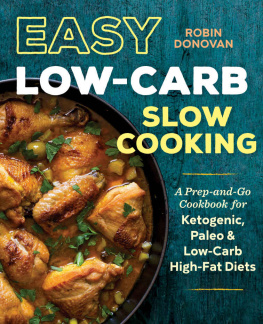
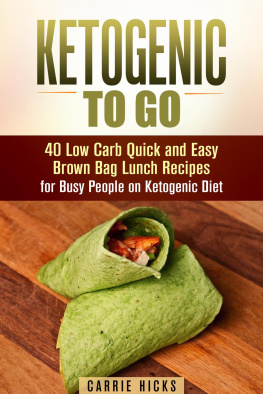


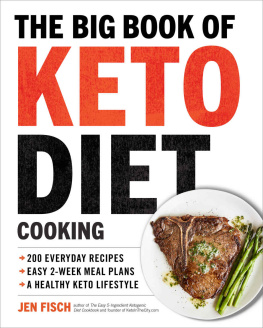

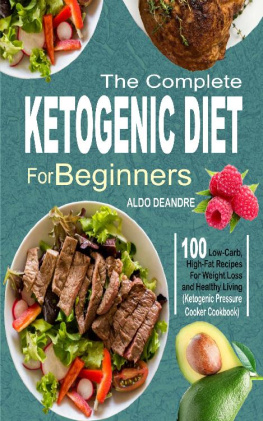
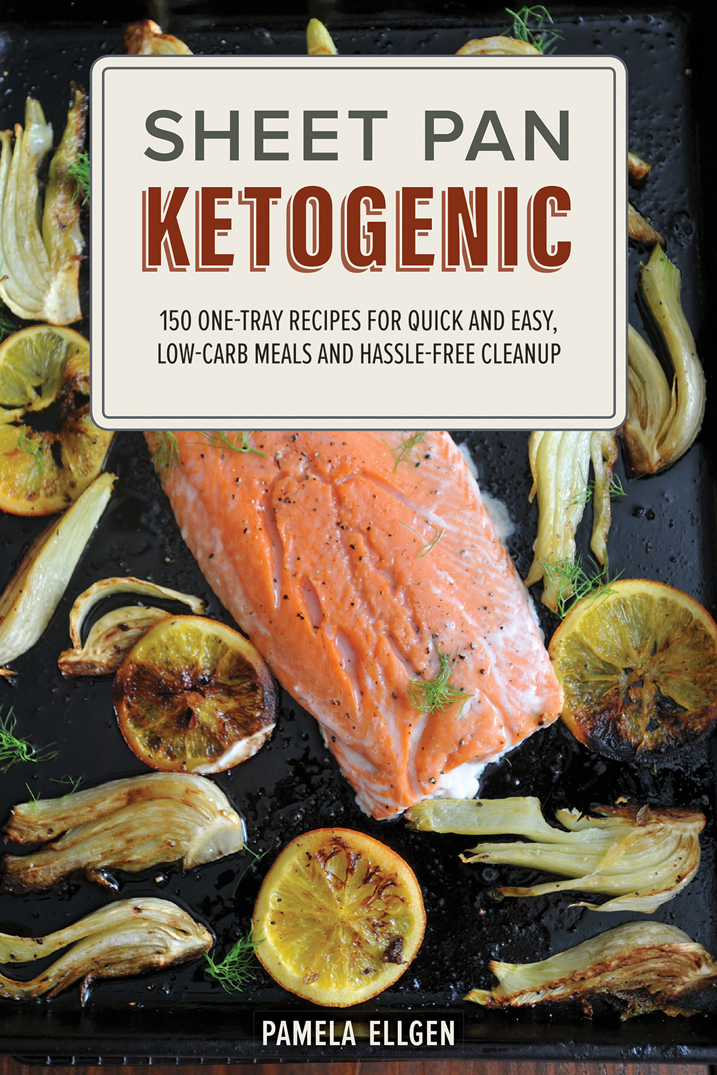
 Text copyright 2017 Pamela Ellgen. Design and concept copyright 2017 Ulysses Press and its licensors. All rights reserved. Any unauthorized duplication in whole or in part or dissemination of this edition by any means (including but not limited to photocopying, electronic devices, digital versions, and the Internet) will be prosecuted to the fullest extent of the law. Published in the U.S. by ULYSSES PRESS P.O.
Text copyright 2017 Pamela Ellgen. Design and concept copyright 2017 Ulysses Press and its licensors. All rights reserved. Any unauthorized duplication in whole or in part or dissemination of this edition by any means (including but not limited to photocopying, electronic devices, digital versions, and the Internet) will be prosecuted to the fullest extent of the law. Published in the U.S. by ULYSSES PRESS P.O.  Calculating Carbohydrate Most experts on the ketogenic diet recommend consuming 20 grams of net carbohydrate or fewer per day, at least initially upon beginning a ketogenic diet. Other experts recommend up to 50 grams of total carbohydrate per day. Carbohydrates contain 4 calories per gram. The suggested range of 5 to 7 percent carbohydrate on a keto diet would amount to a maximum of 25 to 35 grams of net carbohydrate per day in a 2,000-calorie diet.
Calculating Carbohydrate Most experts on the ketogenic diet recommend consuming 20 grams of net carbohydrate or fewer per day, at least initially upon beginning a ketogenic diet. Other experts recommend up to 50 grams of total carbohydrate per day. Carbohydrates contain 4 calories per gram. The suggested range of 5 to 7 percent carbohydrate on a keto diet would amount to a maximum of 25 to 35 grams of net carbohydrate per day in a 2,000-calorie diet.